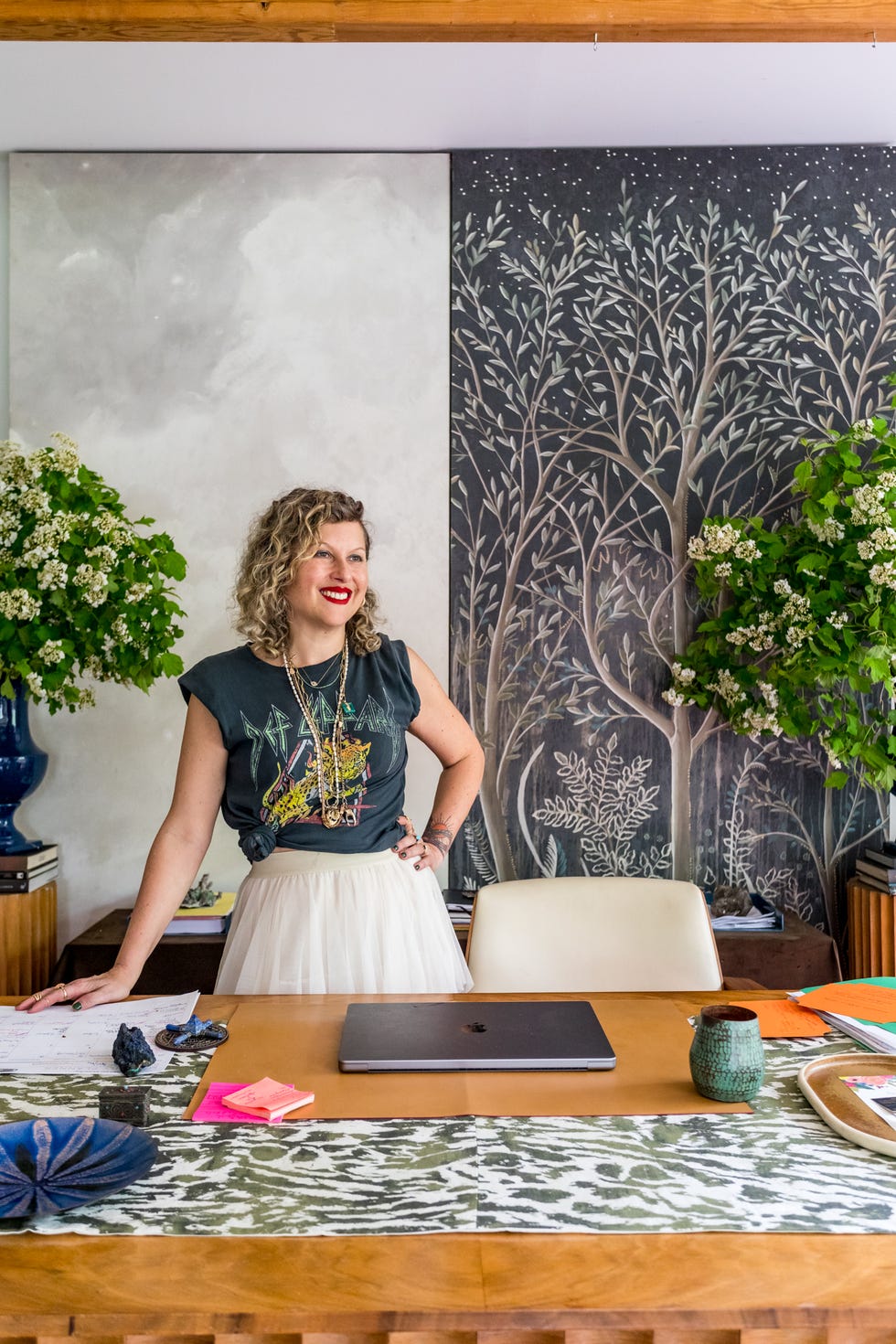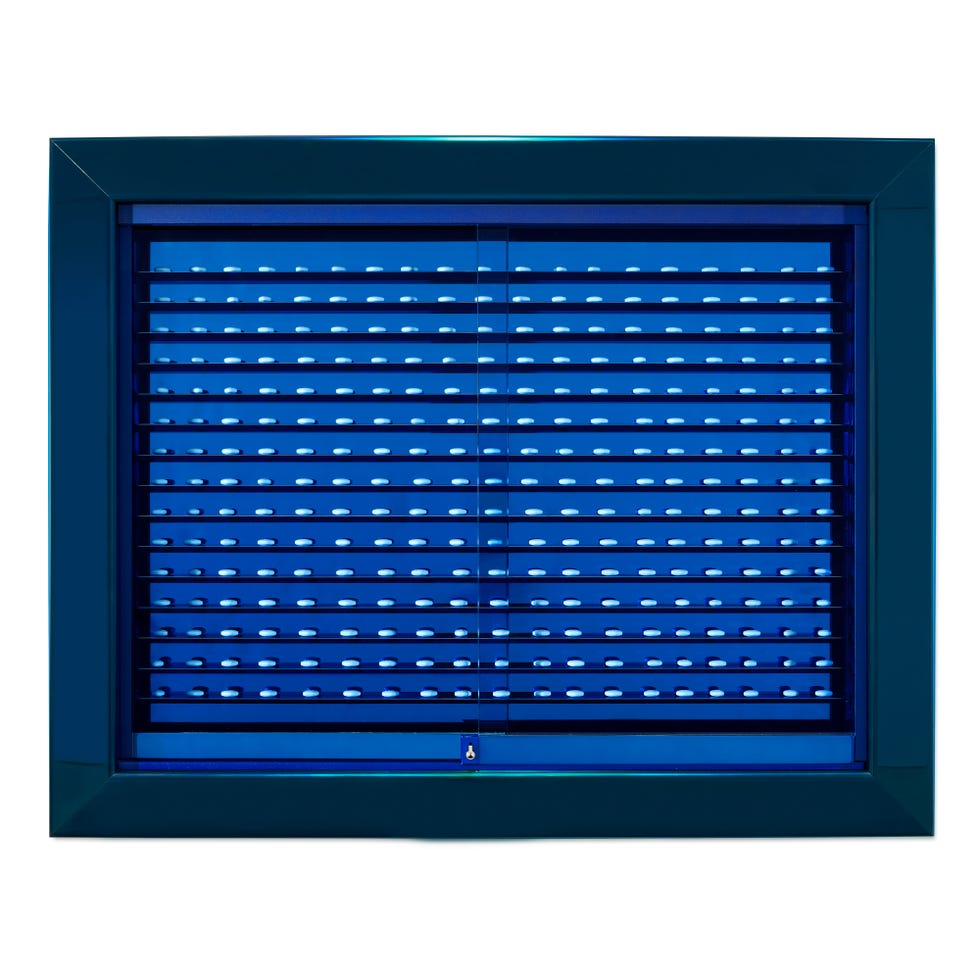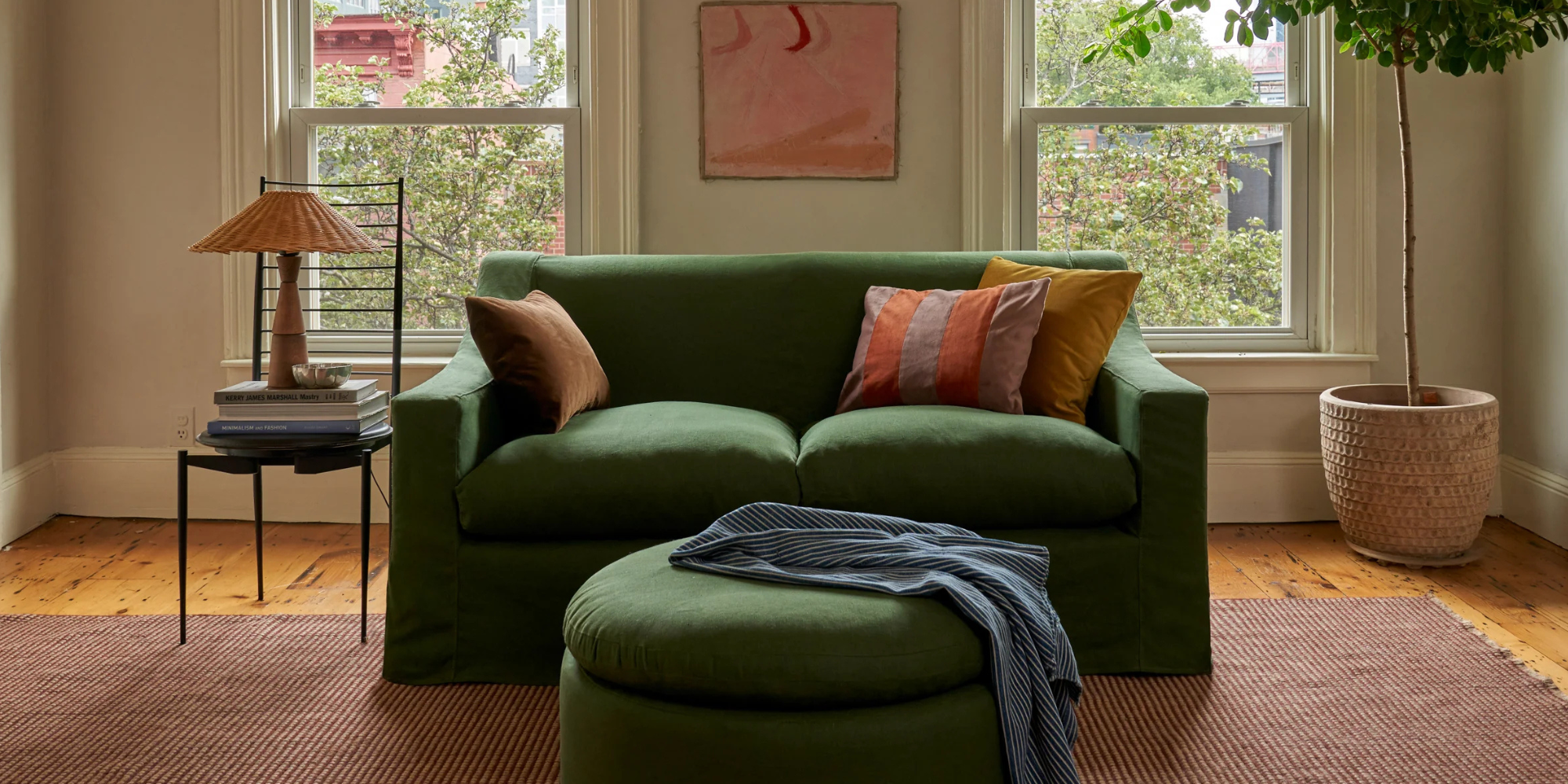With her mop of blond curls, rock ’n’ roll T-shirts, and repertoire of Timothy Leary aphorisms, Olga Naiman doesn’t come across as the typical interior designer. Indeed, she’s not. She’s been called everything from a “renovation shaman” to a “design therapist.” Naiman has come up with her own term for it. “I’m a spatial alchemist,” she says. “I don’t work with clients in a typical way.”
For many years, she was a successful interiors stylist for magazines like Domino and clients including Oscar de la Renta and Target. But her path to enlightenment is laid out in her new book, Spatial Alchemy: Design Your Home to Transform Your Life, coming this spring. In it she outlines her unconventional design philosophy while documenting the renovation of her own house in New York’s Hudson Valley. Her goal, she says, is to show how to renovate not just your rooms but yourself in the process. “Use your home to manifest the person you want to become,” Naiman says.
The daughter of two Ukrainian psychiatrists who emigrated to the U.S. in the 1970s, she studied psychology in college and earned a master’s in set design in London. She pursued a career as a stylist and saw her home on the cover of a magazine. But on the side she was pursuing her own deep interest in spirituality, learning about such practices as meditation, yoga, kabbalah, shamanic rituals, and tantra, along with traditional treatments like cognitive behavioral therapy. It never occurred to her to combine the two interests, but when friends, and friends of friends, started asking Naiman to help decorate their places, she couldn’t help digging deeper. “It’s all about working with identity,” she says of her process. “Who do you want to become? We all want to grow and expand and have more abundance, intimacy, or vitality. How do you design a home to bring that into your life?”
The idea behind spatial alchemy came to her during the pandemic. It was a difficult time. Her editorial and commercial work had dried up. She felt paralyzed. “Deeper questions were percolating inside me, but I didn’t know how to marry them with my established styling career,” Naiman writes in her book. “So I did the only thing that, as an interior designer, I felt a sense of clarity about: I reupholstered five pieces of furniture in my living room.”
That was a more radical act than it might sound. A week before the lockdowns started, she and her husband Mike Smith had bought a fixer-upper for their family in the Hudson Valley. They signed the contract on the 1973 split-level ranch on March 6, 2020. Their life proceeded to fall apart. “It was insane what we went through,” she says. Bank procedures, permitting—everything was halted. “We were frozen for six months, and then we couldn’t get an architect or a contractor.” With their investment on the line, she and Smith ended up doing the work themselves while living off their savings and doing Zoom kindergarten with their twins. Every cent went into the renovation, so reupholstery was a luxury they could not afford.
Naiman remembers moving around every two years as a child after being forced to flee Ukraine, then part of the Soviet Union. She knew that she had a deep need for stability and for a beautiful home. She channeled her “future-self voice” and imagined herself on the other side, as a woman who had survived the chaos of her renovation (it took almost five years) and reinvented herself with a career that “connected her design work with her soul.” She proceeded with the new upholstery and the insight that design can be harnessed to push your life in a new direction.
The idea of spatial alchemy came from Naiman’s studies of the ancient practice, which predates modern science. In medieval times alchemists tried to turn substances like lead into precious metals like silver and gold. “Really it was a metaphor,” she says. “With alchemy, you are refining and refining an everyday substance until you get the most exalted expression of what it is. I realized you could take the leaden parts of yourself and turn them into gold.”
Her goal with clients to transform the humdrum into the magical. Instead of looking outward to the space, she begins by turning inward to identify where homeowners are mentally stuck and where they dream of going. For a woman who was depressed after a divorce, she suggested moving out of the primary bedroom, since it reminded her of her ex. “We moved her into the guestroom and turned the primary bedroom into a yoga and healing space,” she says. The forlorn dining room became a cozy second living room. In this way she kept making tweaks until the whole apartment felt reborn. And eventually the owner was ready to move back into the main bedroom.
«I’ve worked with interior designers before, but none of them ever asked me questions about how I dreamed my home could improve my life outside of day-to-day functionality and comfort,» says one client. «Olga began the process by interviewing me and my husband about the kind of changes we wanted to see and then helped to design our space around it. With two big jobs and a young kid, an important request was to find ways our home could help us to increase our connection to one another. Olga created a dedicated “date table” in our living room—away from the daily chaos of our dining table— in which we could sit and have a drink and chat at the end of day. «
Naiman’s own renovation, documented in the book, shows several of her design strategies—tailored, of course, to her desires and needs. She incorporates moments of softness throughout, from pillows and throws to thick pile rugs on which she likes to lie and chill out. “My future self is living a life that feels very soft, rather than this hard-edged, constantly in a rush, anxious, oh-my-god, overwhelmed kind of life that I tend to live,” she explains. “So this future self is really invited to relax and release.”
With clients, she starts by getting them to articulate their desires, then works on disrupting their old patterns. “This is deeper than decluttering,” Naiman says. “It’s about letting go of that old identity and seeding new patterns.”
She begins with objects related to daily routine: replacing the cup you drink from every day or finding a new toothbrush holder. “You begin to see the cause and effect and how these things impact your mood. And then you think, Wait a second. I threw away that old thing I never liked, and my ex-boyfriend’s armchair, or the art I’ve had since my twenties. And then you put new things into your life, and things start to happen.”
Naiman’s decorating toolbox has a few musts. She’s a big fan of mirrors (“seeing yourself is imperative”) and folding screens for a sense of fluidity. She loves incorporating objects that convey symbols; in her home a pair of wallpaper panels depict clouds and a tree, bringing in the idea of the ethereal and the earthly. She uses color to harness energy; red is a particular favorite. “It’s all about the saturation and intensity,” she says. “There’s a bright, activating red, and there are brick or blood reds that actually calm the nervous system down.”
Lately Naiman has been taking her spatial alchemy toolbox to the next level. She’s designing a treatment center in Manhattan for alternative therapies like ketamine-assisted psychotherapy. “Have you heard the phrase ‘set and setting’?” she asks. It was coined in the 1950s by the LSD pioneer Al Hubbard and relates to how one’s mindset (set) is impacted by the physical environment of a psychedelic experience (setting). “To me it means that space matters, whether you are healing and transforming or just living day-to-day life,” Naiman says. “The spaces you create shape who you are.”
Ingrid Abramovitch, the Executive Editor at ELLE Decor, writes about design, architecture, renovation, and lifestyle, and is the author of several books on design including Restoring a House in the City.









